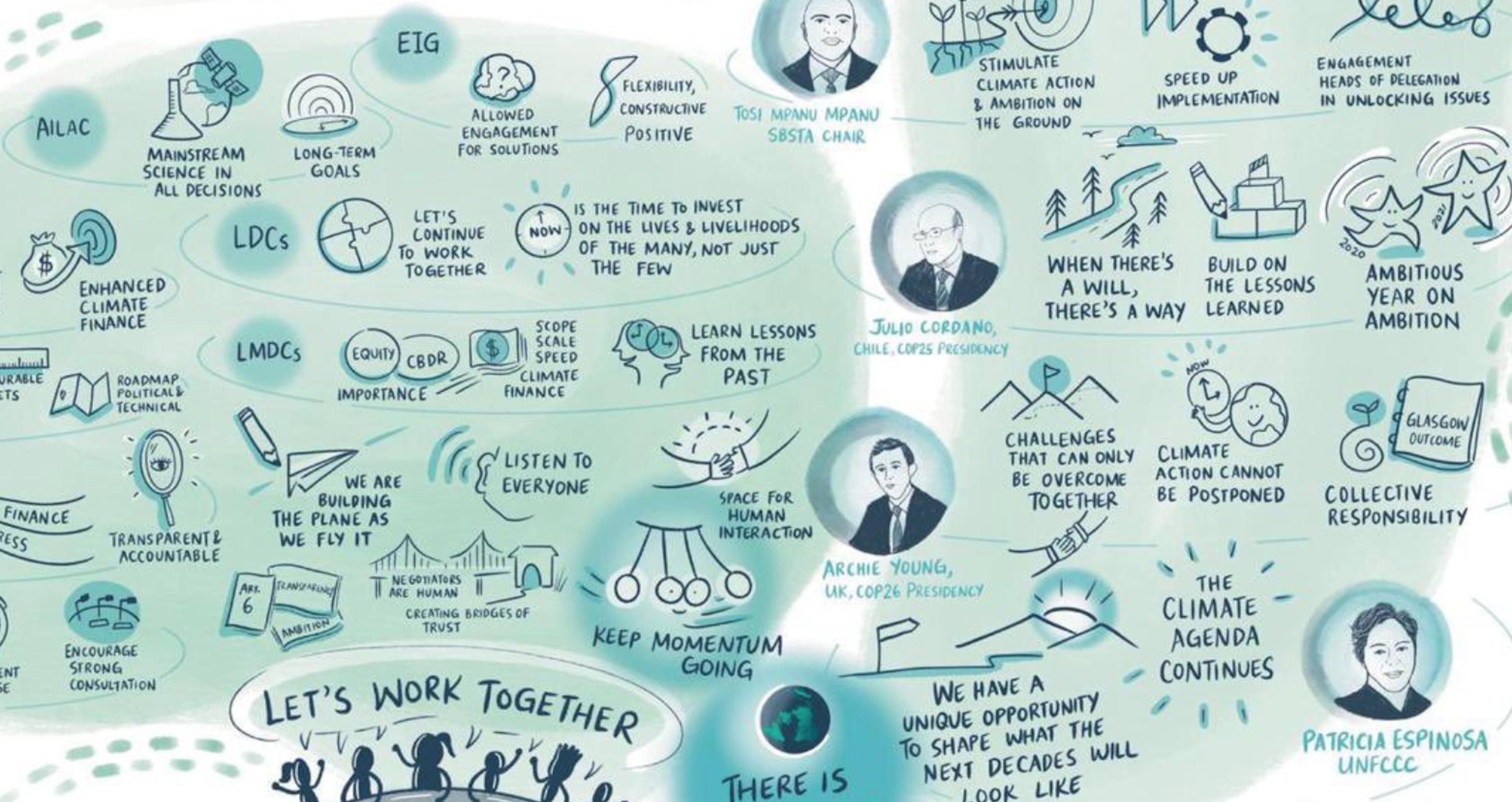On the 11th of December 1997 countries met in Kyoto, Japan, to hash out a plan to reduce global greenhouse gas emissions. Since then, emissions have continued to rise, and the Kyoto Protocol has been replaced with new climate agreements. For many, the protocol is seen as a failed agreement, unable to bring down global emissions and incentivize countries to set ambitious targets. However, for others, we would have been worse off without it, with higher emissions and, most importantly, less knowledge on what it takes to implement successful climate agreements.
In Nada Maamoun’s paper, The Kyoto protocol: Empirical evidence of a hidden success, Maamoun shows how the protocol was able to reduce emissions in ratifying countries by approximately 7% below the emissions expected under a “No-Kyoto” scenario, therefore focusing on its successes and the importance of taking into account the collective nature of the agreement rather than simply looking at reductions in individual countries.
By creating a business-as-usual scenario to compare against a Kyoto scenario, Maamoun reveals that although global emissions have continued to rise, the actual benefits of the protocol are not to be underestimated and a range further than simply addressing emissions reductions.
“If we look exclusively at the emissions perspective, we always feel that we’re coming up lacking. But I would say there’s also a broader perspective than just the emissions. Today we are more effective at addressing climate issues in a more direct way, and this wouldn’t have happened without the Kyoto Protocol,” explains Maamoun.
Popular perceptions of the Kyoto Protocol are often negative, and in fact, a lot of research has focused on its failure to tackle global greenhouse gas emissions effectively. Why do you reach a different conclusion?
Research on the Kyoto Protocol doesn’t always take into account what the counterfactual situation would be. What I mean is that it’s easy to criticize international climate agreements if you compare them to the goal or the targets that they set, especially when these are not reached. However, the question I wanted to ask with this paper was what would have happened without the Protocol?
Although we will never know for certain what the world would look like with no Kyoto Protocol in place, this is still an important question as it can tell us a lot about international agreements in general, especially climate change agreements. Overall, I see the Kyoto Protocol as an important step in the right direction, and my research indicates that we would have been worse off without it. It put us on track, even if the targets themselves were not ambitious enough or not entirely fulfilled.
How were you able to evaluate the effectiveness of the Kyoto Protocol in an empirical fashion?
Establishing causality is always the issue when it comes to empirical work. How do we establish that there is a causal relationship and not just a correlation between events? With something like the Kyoto Protocol it’s particularly tricky because there are lots of variables that cannot be measured accurately.
International agreements and policies are generally tricky to interpret because you do not have a clean-cut experiment where you can see the inputs and outputs and establish a clear causal relationship. To overcome this, I used a synthetic control method to address the entire issue and look at the larger picture.
Basically, I matched countries that signed the Protocol and ones that didn’t base on variables like GDP, industrialization and population (among others) and then established which would be the most similar countries. It was the first time that this particular approach was applied to the evaluation of climate agreements so as to uncover the issue of causality.
In the paper, you compare climate progress in countries that signed the Protocol versus if those countries had kept a business-as-usual trajectory. How did you establish what the business-as-usual trajectory looked like?
The tricky point here is we don’t have this counterfactual: we don’t have the business-as-usual scenario in real life. So, we have to format it synthetically. I did this by looking at countries that are somewhat similar but did not sign the protocol and synthetically formatted a business-as-usual scenario.
Can you give an example to help us visualise this process?
Let’s take the example of Germany. We don’t know what Germany’s behaviour or performance in terms of greenhouse gas emissions would have been without the Kyoto Protocol. However, we have a lot of other countries that did not sign the protocol with somewhat similar attributes. We, therefore, synthetically set up a country that has a performance similar to Germany based on inputs such as GDP, industrialization, and population size and so on. This then becomes the synthetic Germany that would have acted without the Protocol, which actually consists of a weighted average of several countries lending specific traits.
Why do you think other research indicates that the Protocol was not effective?
Lots of research has pointed out that the incentive structure was insufficient to change the behavior of the parties involved, therefore making it useless.
However, this often looks at the Kyoto Protocol’s effectiveness in each country individually and how they lowered emissions. But, if we look at all of those countries together as a group and compare them to the counterfactual, it shows a different picture.
The Protocol is collective by nature. It’s an agreement that needs the participation of lots of parties because if only individual countries act, then there will be no real benefits. What would be the incentive structure for each country on its own? It all relies on other countries complying to reach a collective benefit because if one country complies and reduces its greenhouse gas emissions but the others don’t, no real progress is made.
This is why it’s a collective issue: we’re dealing with a public good.
Overall would you say that the Kyoto Protocol put the building blocks for future climate negotiations in place?
Yes, I would definitely say so. It also allowed us to learn from our mistakes. For example, the Kyoto Protocol started out with a small group of countries that were responsible for a large amount of greenhouse gas emissions. This approach was then revealed to be flawed and insufficient: engaging only those high emitters without putting ground rules for other countries led to many issues, including hot air and carbon leakage. We are now better equipped to deal with these problems.
The Kyoto Protocol revealed the loopholes that can emerge in these agreements.
What kind of loopholes and issues?
Unlike most international legal issues, with climate change, free riding is a very large part of the problem, whereby the voluntary nature of international climate agreements means that some countries have become ‘free-riders’: where one party receives the benefits of reduced GHG emissions without contributing to the costs.
The issue is that some countries could emit and not suffer the full force of side effects or disadvantages from emitting. On the other hand, other countries emit very little, but they end up being disproportionately affected. At COP 27, this was also discussed in light of the African continent, which is very highly impacted, even though it’s not a large emitter and vice versa for other regions.
With climate agreements, you are trying to address a situation and ask countries or parties to spend money on decarbonization, yet these countries may not necessarily see the immediate benefits of their spending. Here is the struggle: how to set up the incentives for parties to comply with the agreement.
With the Kyoto Protocol, large greenhouse gas emitters didn’t have a specific incentive to reduce their emissions. Basically, we are talking about countries in the northern hemisphere that, at least at the time, were not particularly affected by climate change. So, what were their incentives to reduce emissions? And this is the basis of one of the largest criticisms, the issues of hot air or leakage whereby countries would simply shift their factories and emissions elsewhere.
What are the political implications for future climate negotiations?
The Paris agreement is already a step in the right direction and shows that we can learn from the shortcomings of the Protocol. For example, with the issue of leakage: if there had been no leakage, what would the actual greenhouse gas emission reductions have been?
Furthermore, in the Paris Agreement all countries are engaged, but with different targets. This is a way of addressing mitigation as a collective issue that cannot be dealt with individually whilst at the same time following the UNFCCC’s common but differentiated responsibility approach. We have moved on from top-down targets.
Under the Kyoto Protocol most countries were Western industrialized countries that had their own stable economy and were all pretty much on the same level of development. The challenge with the Paris Agreement is that now we have different countries in different phases of development or different stages of their business cycle.
How do you get them to agree? Although the Paris Agreement has addressed some of the issues of the Kyoto Protocol, amongst which becoming a more collective process, this brings different negotiation challenges.
Why do you consider the Kyoto Protocol a relative success?
In the end, I believe things would have been worse without it. We have to look at the impact as more than just what it did for greenhouse gas emissions. We need to consider what would have happened if the Protocol hadn’t been in place and also its role in laying the groundwork for future agreements.
If we look exclusively at the emissions perspective, we always feel that we’re coming up lacking. But I would say there’s also a broader perspective than just the emissions. Today we are more effective at addressing climate issues in a more direct way, and this wouldn’t have happened without the Kyoto Protocol. That’s why I would say it was, at least in part, a success.
 Nada Maamoun is currently a post-doctoral researcher at the institute for environmental resource and spatial economics at the CAU Kiel. Her research addresses questions on the effectiveness of international environmental agreements and she is especially interested in climate change and air pollution mitigation. She applies empirical models to analyze the performance of international environmental agreements and is also interested in looking at different aspects of climate policy making and how it interacts with different areas such as trade agreements and Civil Society.
Nada Maamoun is currently a post-doctoral researcher at the institute for environmental resource and spatial economics at the CAU Kiel. Her research addresses questions on the effectiveness of international environmental agreements and she is especially interested in climate change and air pollution mitigation. She applies empirical models to analyze the performance of international environmental agreements and is also interested in looking at different aspects of climate policy making and how it interacts with different areas such as trade agreements and Civil Society.






